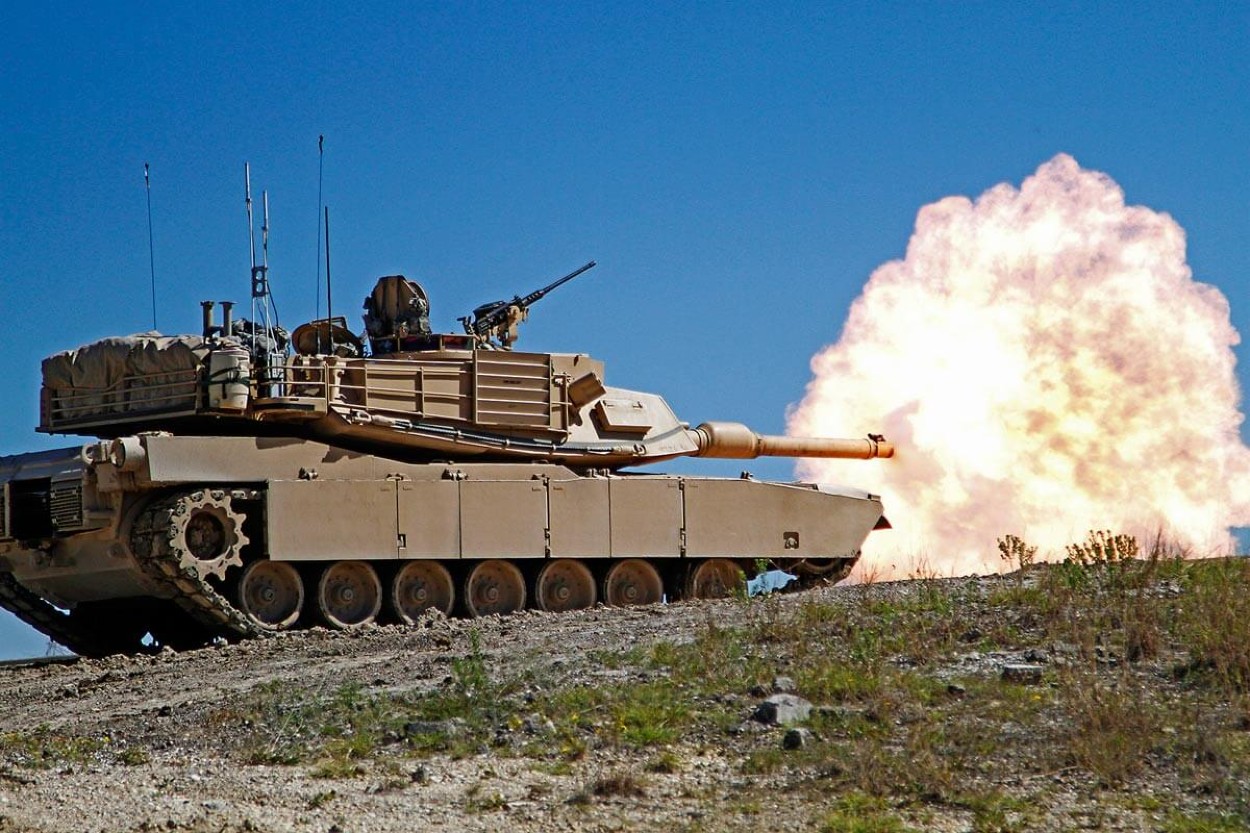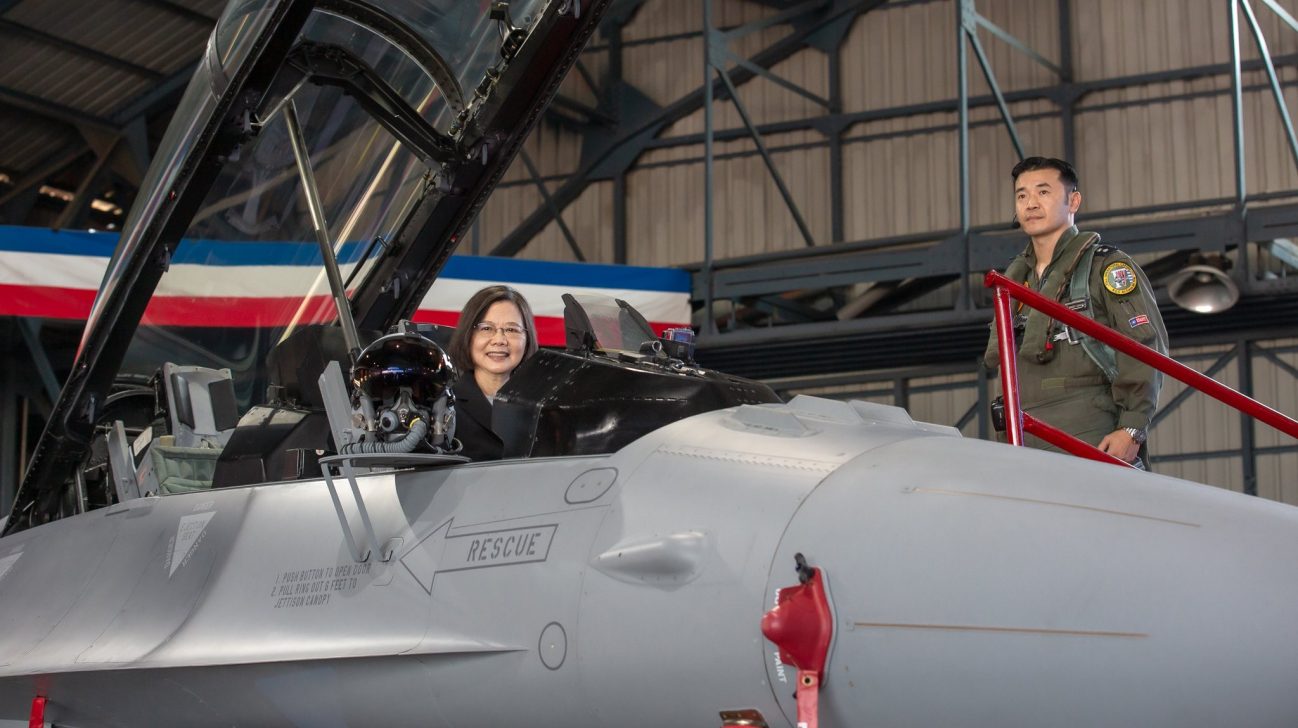With a mounting weapon backlog from the United States, including deliveries of cutting-edge systems like the Abrams Main Battle Tanks (MBTs) and F-16 fighter jets, Taiwan’s capability to weather a cross-strait crisis has now come under the scanner.
A study conducted by the Libertarian Cato Institute in Washington has revealed that one of the most significant items on the list is the Abrams MBTs, for which an order was placed in 2019.
Taiwan is awaiting the delivery of 108 Abrams based on the perception that the tanks will be crucial in thwarting a Chinese invasion due to their ability to fire from mountaintops.
The delivery date for the tanks has been rescheduled to begin in 2024 instead of 2022, as was initially planned. The Republic of China Army (RoCA) is acquiring Abrams to replace the second-generation M60A3 Patton and CM-11 Brave Tiger tanks in service for over two decades.
It is part of the government’s extensive military modernization effort as the threat of a Chinese invasion looms large. China views the island as a breakaway province that must be reunited with the mainland. If required, by force.
The Taiwanese Army has maintained that the M1A2T tanks will have better maneuverability, keep up with rapid changes on the battlefield, improve the Army’s overall combat readiness, improve joint combat effectiveness, and bolster firepower.
M1A2 is a digital tank with an electronic backbone, powerful computers, and an open architecture that allows interoperability and eases the maintenance burden while facilitating future upgrades without significant redesign. For these cutting-edge features, it has been projected as an ideal choice for the RoCA in fighting the Chinese.

This is why the delay in their deliveries has caused discomfort in Taipei, especially as it is headed towards an election in January.
Going by an assessment published earlier, it is unlikely that Abrams would make a difference against China in the long run. The review noted that the US Army’s battle-hardened M1 Abrams tanks would not be able to “dominate” the battlefields until the 2040s, particularly in light of a possible conflict with China.
As one of the heaviest tanks in service today, the M1 Abrams is an American main battle tank from the third generation that has been developed for modern armored land warfare.
However, the Army Science Board, an independent advisory panel to the Secretary of the Army with federal recognition, concluded that M1 Abrams tanks would not be “effective” in a high-end conflict with China.
The evaluation, which took place over a long period starting in 2019, stated that the M1 Abrams would not dominate the battlefield in 2040 since all its benefits — movement, firepower, and protection — remained vulnerable.
The statement highlighted that while the M1A2 SEP V3&4 improvements would increase the tanks’ capabilities, they wouldn’t establish superiority.
Taiwan, on its part, is acquiring the M1A2T, a customized model of the System Enhancement Package Version 2 (SEPv2) of the Abrams main battle tank, which adds to Taiwan’s predicament.
In the event of a Pacific War, the US Army sees considerable potential for employing its Abrams, particularly if it becomes necessary to land tanks in Taiwan to free it from Chinese occupation.
Although the assessment was aimed at singling out the chink in US Army’s armor as it seeks to prepare itself for a war with China, the vulnerabilities also directly impact Taiwan.
The Patton and CM-11 Brave Tiger tanks that Taiwan currently operates have been in service for more than two decades now.
If this self-ruled island state were to run the Abrams it is set to acquire in 2024, it would likely be used well into the 2040s, when its key capabilities would have significantly eroded. At the same time, China can be expected to churn out more advanced capabilities.
While any cross-strait conflict between the two states is expected to take place on the sea and in the air, Taiwan would need significant ground-based firepower to expel Chinese tanks that might roll inside the island state as part of an invasion.
F-16s, Crucial Munitions Get Delayed
Although bolstering its air power to face off against China is a prerequisite for Taiwan’s security, one major asset on the list of items whose delivery has been delayed is a US$8 billion order for the upgraded Block 70 version of the F-16 fighter plane.
Taiwan’s Ministry of National Defense claims that throughout the last three years, China has flown more than 4,000 fighter jets, drones, and other aircraft into Taiwan’s air defense identification zone (ADIZ). China’s air force’s mainstay, three J-16 fighter planes, flew into its ADIZ earlier this week.

Each time a PLA Air Force (PLAAF) aircraft intrudes into the Taiwanese ADIZ, the Republic of China Air Force (RoCAF) scrambles its F-16 fighter jets to carry out the necessary interception. This has also stressed the F-16s and their respective fighter pilots.
To fend off a Chinese military invasion, Taiwan has recognized that it is crucial to have highly maneuverable aircraft that can detect, track, and attack targets at long distances. The United States approved a US$8 billion sale of Lockheed Martin Corp F-16 fighter jets to Taiwan in 2019. This deal would bring the island’s F-16 fleet to more than 200 jets, the largest in Asia.
However, the delivery of these jets has been marred with delays that directly impact the self-ruled island’s capability to defend itself against a much bigger and more powerful enemy.
Taiwan’s Defense Minister Chiu Kuo-cheng said earlier this year that Supply chain interruptions have caused a delay in the delivery of 66 advanced modern F-16Vs from the United States.
Additionally, the delivery of Harpoon anti-ship cruise missiles—which may be used to neutralize Chinese ships approaching the coast—has not been completed yet. It was in 2020 that the former Trump administration authorized the sale of around US$2.4 billion worth of missiles to Taiwan.
According to a report from Liberty Times Net, Taiwan has been working closely with the United States since last year to accelerate the delivery of Harpoon missiles.
Officials from Taiwan have been in talks with their US counterparts to expedite the timeline of arms shipments, to receive more than half of the missiles within the next three years and the remaining missiles by the end of 2029.
In addition to the Harpoons, the report revealed that US$2.8 billion worth of ammunition, including that for the vaunted F-16s, has not yet arrived. Taiwan’s opposition parties have blasted these delays.
According to a statement released by the Defense Ministry, payments for the orders are being made as they are delivered.
- Contact the author at sakshi.tiwari9555 (at) gmail.com
- Follow EurAsian Times on Google News




